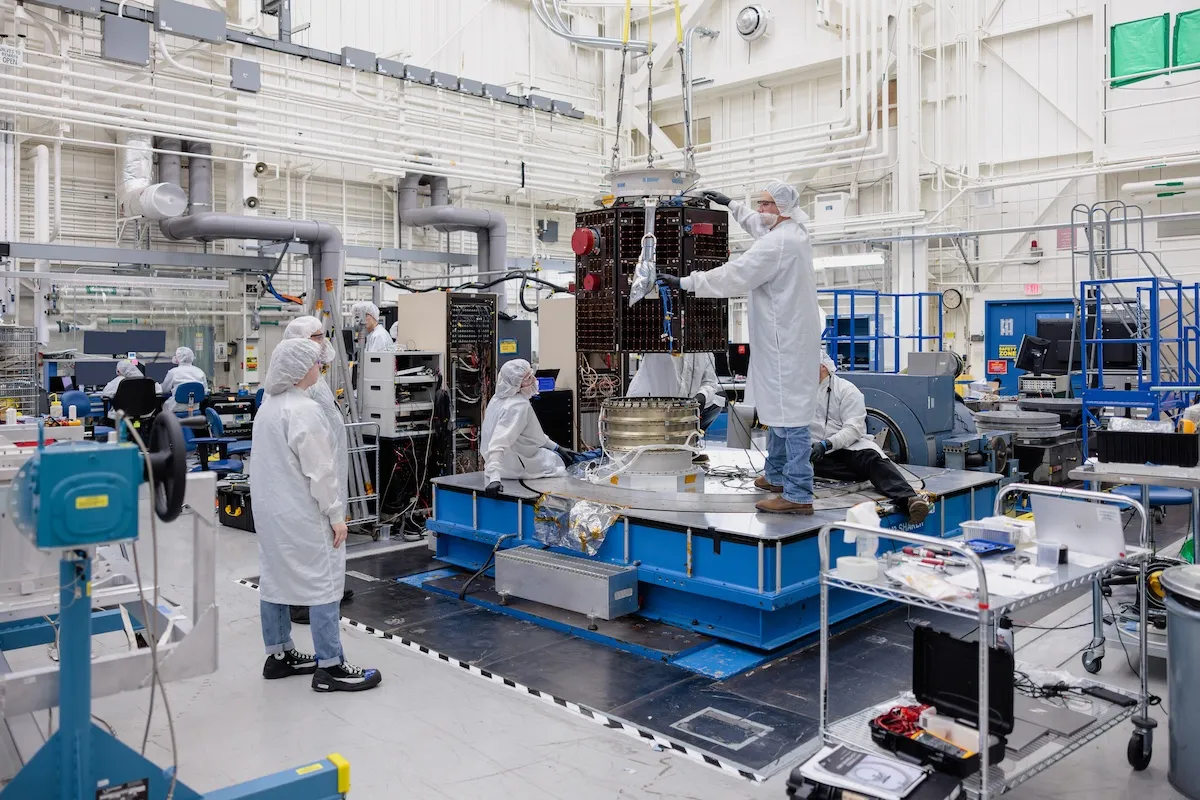
NASA Launching Rocket from Santa Barbara County to Study Space Weather
How did your country report this? Share your view in the comments.
Diverging Reports Breakdown
NASA Launching Rocket from Santa Barbara County to Study Space Weather
A SpaceX Falcon 9 rocket is scheduled to launch from Vandenberg Space Force Base this Tuesday. The Tandem Reconnection and Cusp Electrodynamics Reconnaissance Satellites, or TRACERS, will study how Earth’s magnetic field interacts with solar wind. Instruments built by UC Berkeley, UCLA, and the University of Iowa will help scientists determine how solar storms transfer energy into our atmosphere. All four payloads are designed to be deorbited responsibly at the end of their operational lives, part of the agency’s “Clean Space” initiatives to reduce orbital junk and prevent satellite collisions. “We want future spacecraft to benefit from the same capabilities as cell phones do on Earth,” said SCaN deputy program manager Greg Heckler. The mission, valued at $170 million, exemplifies a tight collaboration between academia, government, and private aerospace partners. The launch is scheduled for 11:13 a.m. PDT on July 22, weather permitting.
The Tandem Reconnection and Cusp Electrodynamics Reconnaissance Satellites, or TRACERS, will launch from right here in Santa Barbara County to study how Earth’s magnetic field interacts with solar wind — charged particles that stream off of the Sun. Think of it like this: Earth’s magnetosphere is our planet’s invisible force field, shielding us from radiation, but sometimes that barrier gets poked — hard — and we end up with northern lights, GPS glitches, or worse, a regional power outage.
One of two TRACERS spacecraft is connected to the payload attach fitting (PAF) inside a clean room at Millennium Space Systems Small Satellite Factory in El Segundo, CA. | Credit: Millennium Space Systems
“This mission is critical to understanding — and eventually predicting — how energy from the Sun impacts both Earth and the systems we depend on,” said Joe Westlake, director of NASA’s Heliophysics Division. “We want to keep our way of life safe and enable safe space exploration.”
David Miles, the University of Iowa researcher leading the mission, put TRACERS’ goal another way: “We’re trying to understand how the coupling between the solar wind and Earth’s magnetic systems changes in space and in time.”
The twin spacecraft will orbit just seconds apart, capturing near-simultaneous measurements of the solar wind’s impact. Instruments built by UC Berkeley, UCLA, and the University of Iowa will help scientists determine how solar storms transfer energy into our atmosphere.
NASA selected TRACERS as part of its Small Explorers program, with key instruments developed by researchers at UC Berkeley and UCLA. The mission, valued at $170 million, exemplifies a tight collaboration between academia, government, and private aerospace partners.
TRACERS won’t be traveling alone. Three other missions are tagging along for the ride, all developed under NASA’s low-cost innovation banner:
ATHENA EPIC (Economical Payload Integration Cost), led by NASA Langley, will observe outgoing thermal radiation from Earth — data critical for weather modeling and climate research. “Sunlight drives energy flows,” said Principal Investigator Kory Priestley. “ATHENA will observe outgoing radiation from Earth.”
(Economical Payload Integration Cost), led by NASA Langley, will observe outgoing thermal radiation from Earth — data critical for weather modeling and climate research. “Sunlight drives energy flows,” said Principal Investigator Kory Priestley. “ATHENA will observe outgoing radiation from Earth.” PEXT (Polylingual Experimental Terminal), a project from NASA’s Space Communications and Navigation (SCaN) program, will demonstrate a communication system that can switch between space networks — similar to how phones roam across carriers. “We want future spacecraft to benefit from the same capabilities as cell phones do on Earth,” said SCaN deputy program manager Greg Heckler.
(Polylingual Experimental Terminal), a project from NASA’s Space Communications and Navigation (SCaN) program, will demonstrate a communication system that can switch between space networks — similar to how phones roam across carriers. “We want future spacecraft to benefit from the same capabilities as cell phones do on Earth,” said SCaN deputy program manager Greg Heckler. REAL (Relativistic Electron Atmospheric Loss), a CubeSat built at Dartmouth College, will study high-energy particles known as “killer electrons” that orbit Earth and can damage satellites or degrade the ozone layer. “This is critical for understanding what is scattering them,” said PI Robin Millen.
This mission hits especially close to home. With instruments supported by California institutions and the rocket launching from right here in Santa Barbara County, residents have a front-row seat to a cutting-edge science mission with real-world implications.
And while NASA is sending multiple instruments into orbit, it’s also thinking long-term. All four payloads are designed to be deorbited responsibly at the end of their operational lives, part of the agency’s “Clean Space” initiatives to reduce orbital junk and prevent satellite collisions.
Liftoff is scheduled for 11:13 a.m. PDT on Tuesday, July 22, weather permitting.
